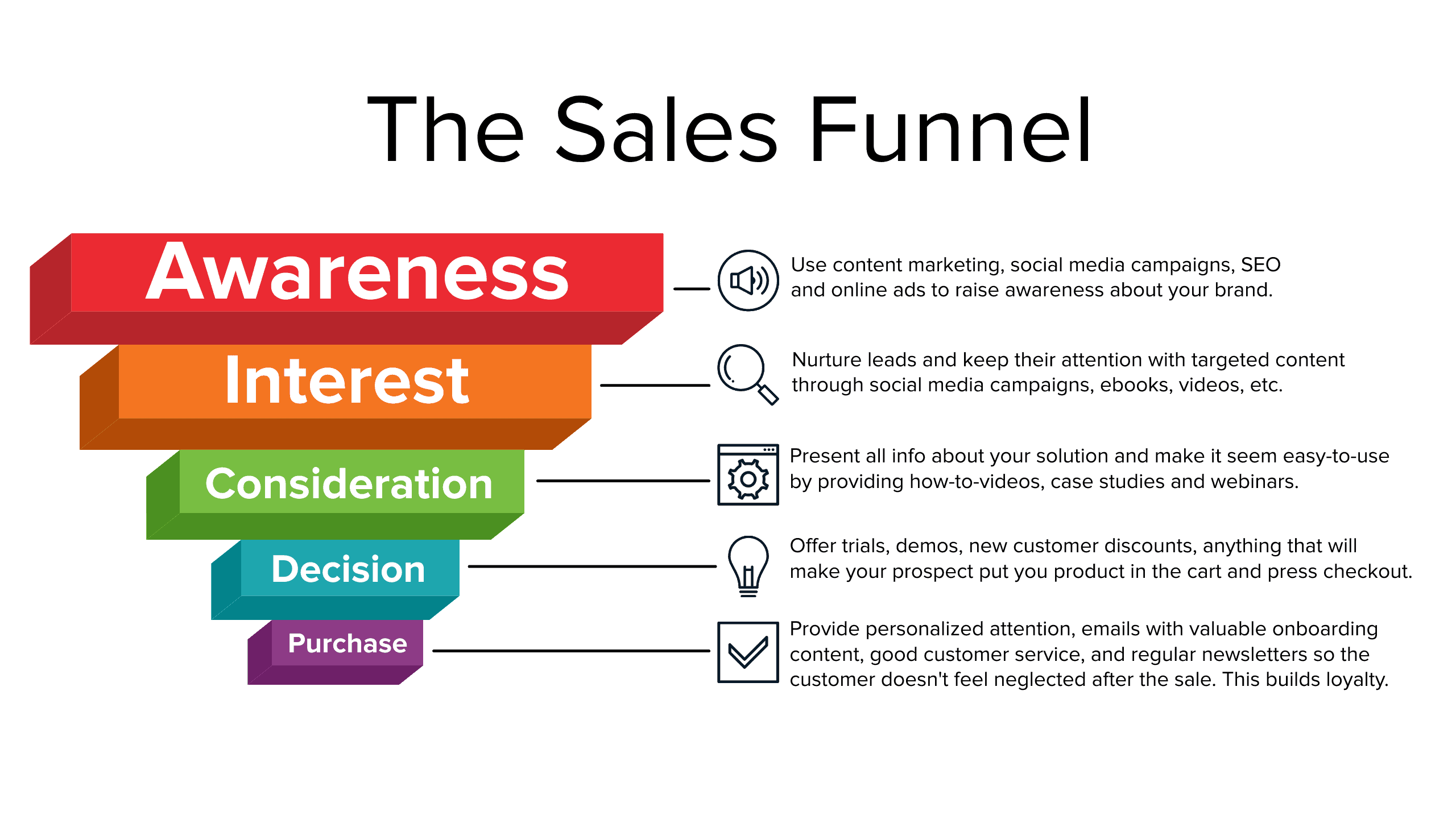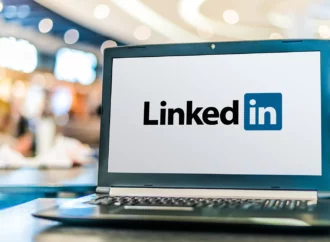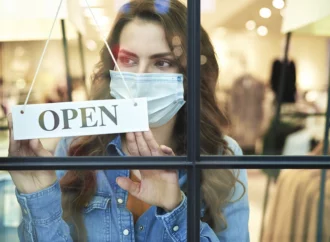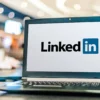Optimizing the Sales Funnel with On-going sales, marketing and customer service The traditional sales funnel has been in practice since 1924 when the concept was first presented in “Bond Salesmanship” by William Townsend. Since then, it is the code of all sales departments, pasted on walls and referenced in quarterly sales quota meetings. The concept
Optimizing the Sales Funnel with On-going sales, marketing and customer service
The traditional sales funnel has been in practice since 1924 when the concept was first presented in “Bond Salesmanship” by William Townsend. Since then, it is the code of all sales departments, pasted on walls and referenced in quarterly sales quota meetings. The concept is universal: visitors enter at the top as leads and exit the funnel as a sale/customer.
We all know what it looks like:
But what the funnel has not done is change with consumer trends – especially in how and why people choose to buy. Nowadays, there are so many options on the market (especially the digital market) for different products and services. Also, consumers are suspicious of companies and oftentimes it is difficult for companies to acquire customer loyalty.
What is the Flywheel business model?
One of the major pitfalls of the sales funnel is that the model focuses heavily on customer output, but not so much on what happens after the sale is made. That’s where the flywheel can be a stronger business model.
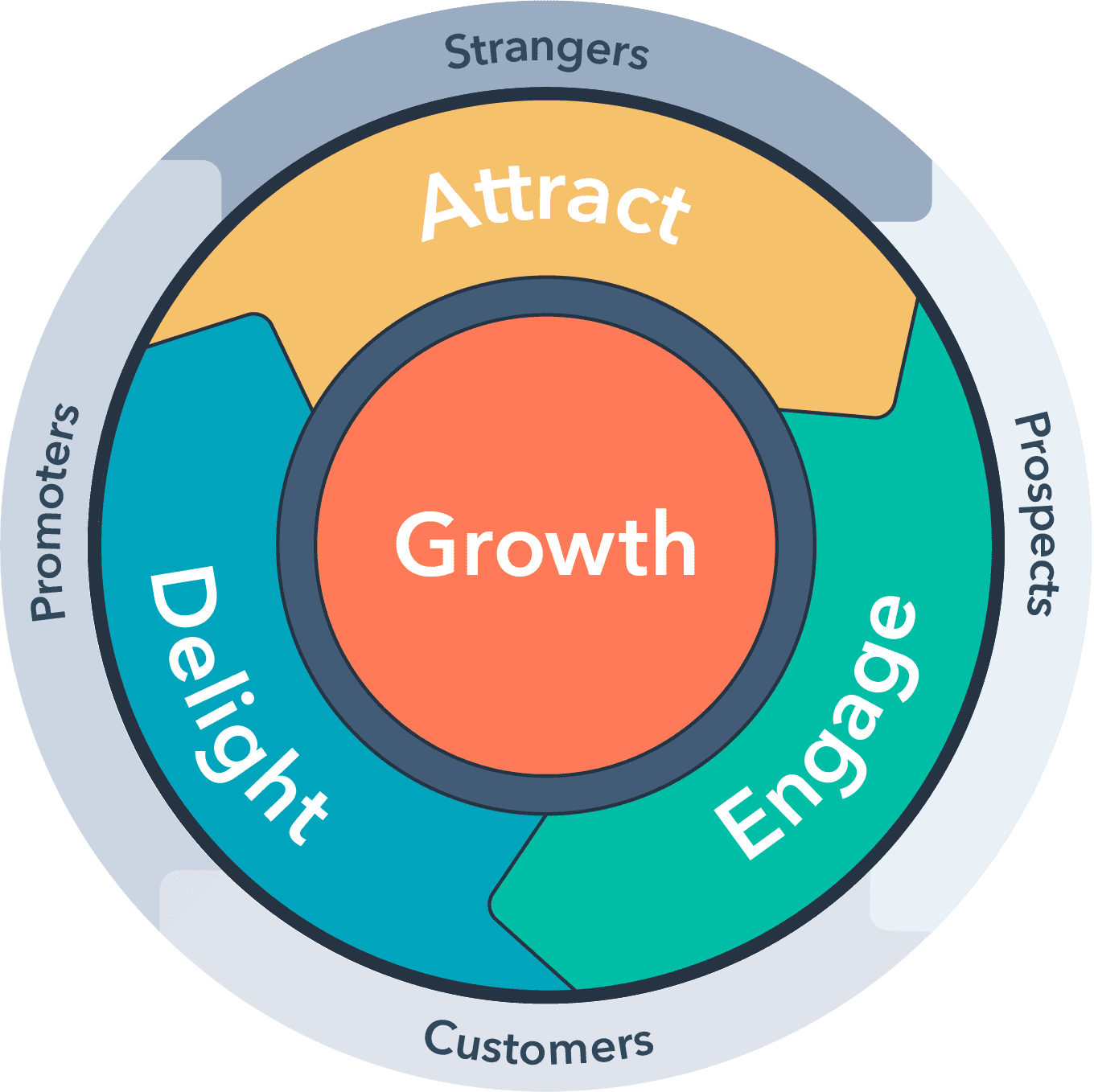
As the image above portrays, the Flywheel business model, first adapted by HubSpot, puts customers at the center of your business strategy. It puts your business strategy in constant motion so that your entire organization delivers a remarkable customer experience consistently. The key is to think about customers as a vehicle for growth instead of an output.
Unlike the traditional business funnel, the flywheel business model relies on your leads, prospects, and customers to provide the energy that powers the flywheel. Your sales team’s job is to remove any friction that could get in the way of that energy.
This business model favors today’s consumer habits. The modern consumer wants to take charge of their purchasing decisions by gathering their own information. With your customers at the center of the flywheel model, the sales, customer service and marketing teams deliver the information and service that helps customers make decisions that best suit their needs.
Phases of the Flywheel Business Model
Attract Phase
In this phase of the flywheel, you attract visitors with relevant content and put aside barriers to them learning about your company. This could be a free downloadable case study or white paper. You want to put something in your customer’s face, but not force it. Examples include: content marketing, search engine optimization, social media marketing, social selling, targeted paid advertising and conversion rate optimization.
Engage Phase
In the engage phase, let your leads shop and buy from you with ease. Enable them to engage with you on their preferred timeline and channels. This is crucial for your sales team – focus on opening relationships, not closing deals. Get the momentum of the flywheel going with website and email personalization, database segmentation, marketing automation, lead nurturing, multichannel communication (chat, phone, messaging, email), sales automation, lead scoring, and try-before-you-buy programs.
Delight Phase
And finally, in the delight phase, you help, support, and empower customers to reach their goals with a winning customer experience. Remember, customer success is your success. Some forces you can leverage are self-service (Knowledge base, chat-bot), proactive customer service, multichannel availability (chat, messaging, phone, email), ticketing systems, automated on-boarding, customer feedback surveys, and loyalty programs.
Benefits Of The Flywheel Business Model
So how do your sales, marketing and customer service teams function using the flywheel business model? Let’s take a look at the benefits.
Sales
The sales department as we know it operates on the quarterly model. It’s a race to follow leads through the pipeline to close the sale, get the commission and eke out the quarterly quota. Most sales reps will abandon leads or potential customers that they have no hope of converting in the funnel in favor of full on pursuit of the ones they feel confident in closing.
The Problem?
On the first day of the new quarter, the sales team is usually left with an empty funnel that they have to reload again with leads. Prospective leads that have been abandoned are now nowhere in sight. The sales team lost the momentum in their hot pursuit of a deal – back to square one. Exhausting!
This also poses a problem for the consumer. Today’s modern consumer expects a level of engagement and custom treatment throughout the life of their buying process. The attitude to abandon sales that aren’t ready to convert drives potential customers away.
The Flywheel Business Model Advantage
Let’s be realistic – the flywheel business model is not going to magically produce quarterly quotas, but it can ease the friction of losing momentum with prospects that are not ready to convert to a sale.
The key to engaging your audience even when they are uncertain is consistent content and positive interaction. The burden of customer engagement doesn’t fall on the shoulders of one team only – it incorporates the efforts of the marketing, sales and customer service team (more on this later). Whether the input is a customer, returning customer or a lead, the sales team will have a way to engage with them.
Marketing
The job of the marketing team is to attract and engage customers – specifically the target market customers. In the traditional funnel, they usually come somewhere in the mid-section with some ads and targeted content. Nowadays, marketers have tools like Google Analytics, Spyfu, Lead 411 and a myriad of CRMs (Customer Relationship Management Software) to measure and track data on customers. This allows marketing to be niche and speak to the exact type of customer a company wants.
The Flywheel Advantage
With the flywheel business model, the inbound marketing methodology is even more effective at reducing friction. Marketing teams work with customer service and sales to attract and keep customers. With data that they share across teams, marketing can get a better idea of what types of content customers will respond to. It’s all about creating a relationship with the customer.
Some customer-centric marketing materials that will delight your target audience include:
- Blogs
- Case Studies
- Newsletters
- Free/Downloadable content
- Surveys
- Positive Review
- Social Media
- Inbound Mail
The point of marketing is to enable the sales team, so marketing initiatives must be based on data mined from the sales team. Instead of throwing a random ad in front of a lead or customer, marketing puts the choice in the customers hands to choose to engage. Give your leads an interesting blog to read that engages them and gets them thinking, not only about your product, but about topics relevant to their industry. Customers might even do some marketing for you if they share your content on a social media network or refer your services to a peer. Happy customers are happy to support your business and growth.
Customer Service
Friction in the customer service department is inevitable. When a customer calls to speak to customer service, they have some issue or problem with the product or service that needs resolved. In short, they are looking for a solution from the business. Customer service doesn’t have to be about the run-off of the sale though. It should be another opportunity to keep the traction going in your flywheel business model and delight, attract and engage your customers.
How To Start Your Flywheel
So how can you do it? In the flywheel business model, the customer experience should be a constant flow of information to enable customers to take charge of their purchasing power. A customer with a question sometimes can benefit from a simple FAQ answer document on the website. The first touch point for many consumers is looking for an answer without calling to speak to a customer service team member. Align business goals with customer success and you will significantly decrease friction between your company and your customers.
Ways to Reduce Customer Support Friction
- Provide multiple channels for customers to access information
- Make it easy to purchase or cancel orders
- Build a Knowledge Base
- Provide Value through free content
- Develop products with customer happiness in mind
- Consolidate teams to improve communication
- Implement one point of contact for every lifelong customer
On-going
The traditional sales funnel starts and stops every time a lead moves from a MQL (Marketing Qualified Lead) to a SQL (Sales-Qualified Lead). Leads also pass through each funnel of marketing, sales and customer service, which causes a lot of friction and abrupt transition.
With the flywheel approach, the momentum is on-going because the customer is at the center of all interactions. Leads receive constant, positive contact with your marketing, sales and customer service teams. They don’t “stop” with one team just because they’ve become a lead or sale.
Output vs. Input
Looking at the diagram below, the traditional funnel on the left has a clear start and stop – outputting a sale / customer. In the flywheel on the right, the customer never leaves the funnel, but continues to act as a catalyst for interaction.
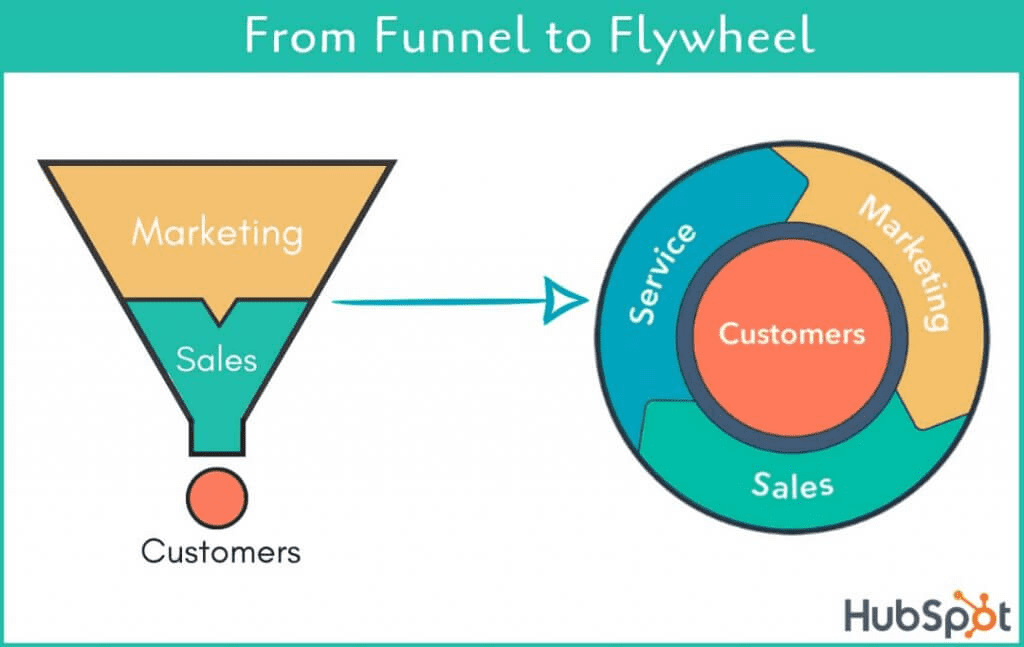
Focusing on output of sales leads sales teams to lose touch with the customer and their needs. It equates to lost energy, time and potentially customers if they never have another interaction with them.
Conversely, in the flywheel customers are the input. Their energy is stored in and powers the flywheel. Energy is retained after a lead becomes a customer, as they are then converted into a brand promoter of your product or service to others in their industry.
Genuine Teamwork vs Siloed Teams
Research has shown that siloed teams do not support the overall health and growth of a company. Siloed teams are the epitome of the cubicle office – all marketing, sales and customer service teams have their own funnel that does not extend into other teams. It doesn’t advocate for transparency or overall teamwork.
Genuine teamwork really does involve all groups working towards a common goal. We have observed this in sports settings, so why not use it in a business? In this framework, while each team has their focus area, they utilize the same flywheel – storing and releasing energy. All teams can communicate and make positive touch points at any point in a lead or customer’s journey.
When all teams work towards common goals, everyone gets more support. Instead of sales versus marketing, or a “tough client” being the sole responsibility of the customer service team, the whole team should work together. With their varied backgrounds and knowledge, each team can provide a higher level of customer experience that reduces friction around leads, prospects and customers.
Support Revenue-Driving Marketing and Sales with the Flywheel Business Model
Perhaps you are saying to yourself that your teams already communicate with one another – the flywheel business model is just another angle of looking at the business funnel. The flywheel model (and any model for that matter) is not going to magically produce quotas, happy customers, value, or reduce friction. What will do all of that is the response from your teams.
Assess your approach to the entire sales process and how each team functions. Are there areas where you may be able to improve your content output to delight your audience more? Are there ways that all teams (not just customer support) could respond to customers that are in crisis or unhappy with your product and/or service? A funnel is just a diagram, the real output is the methodology you choose and how it is put into action.
Increase the relationships in your company and you will see true ROI from your efforts.


